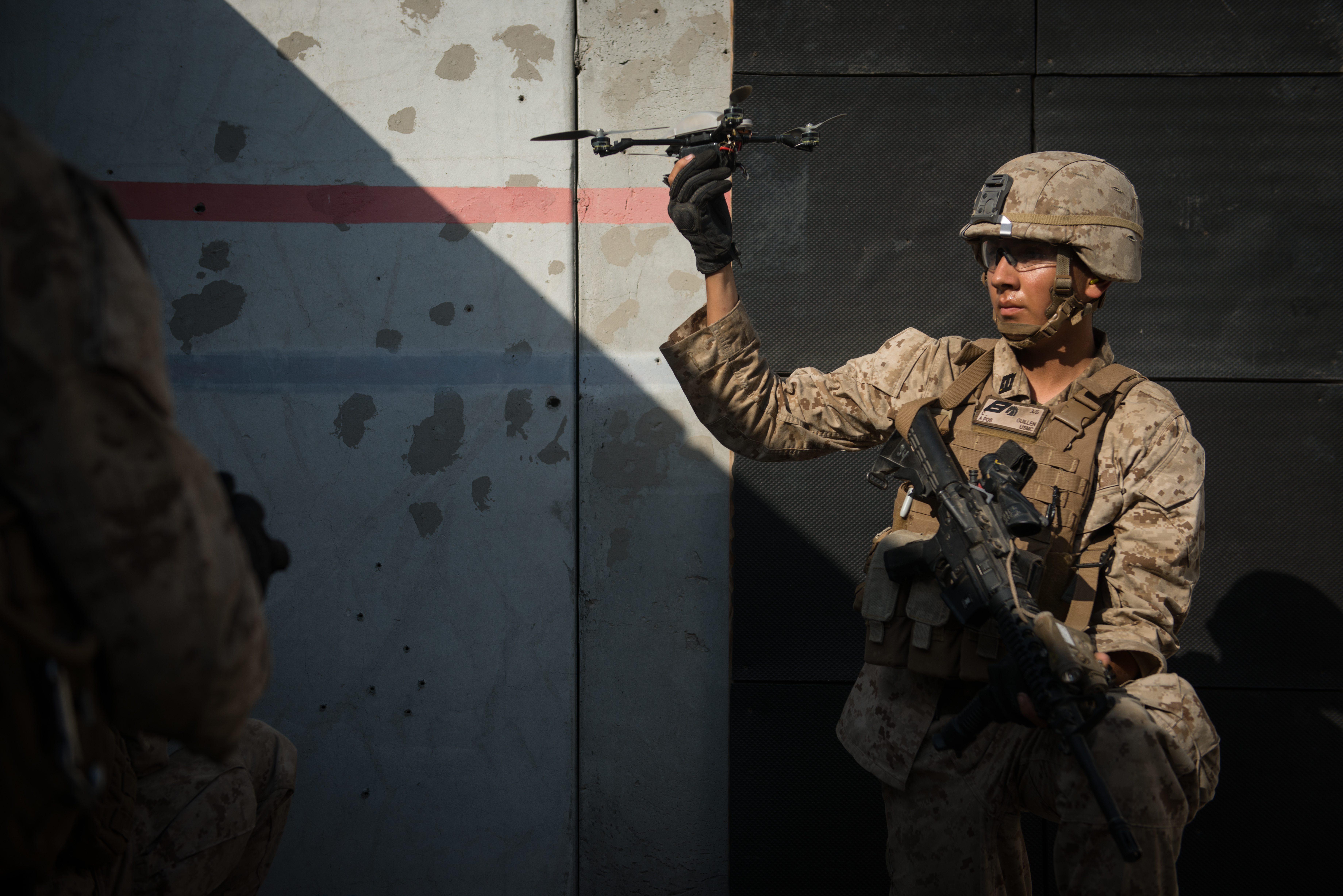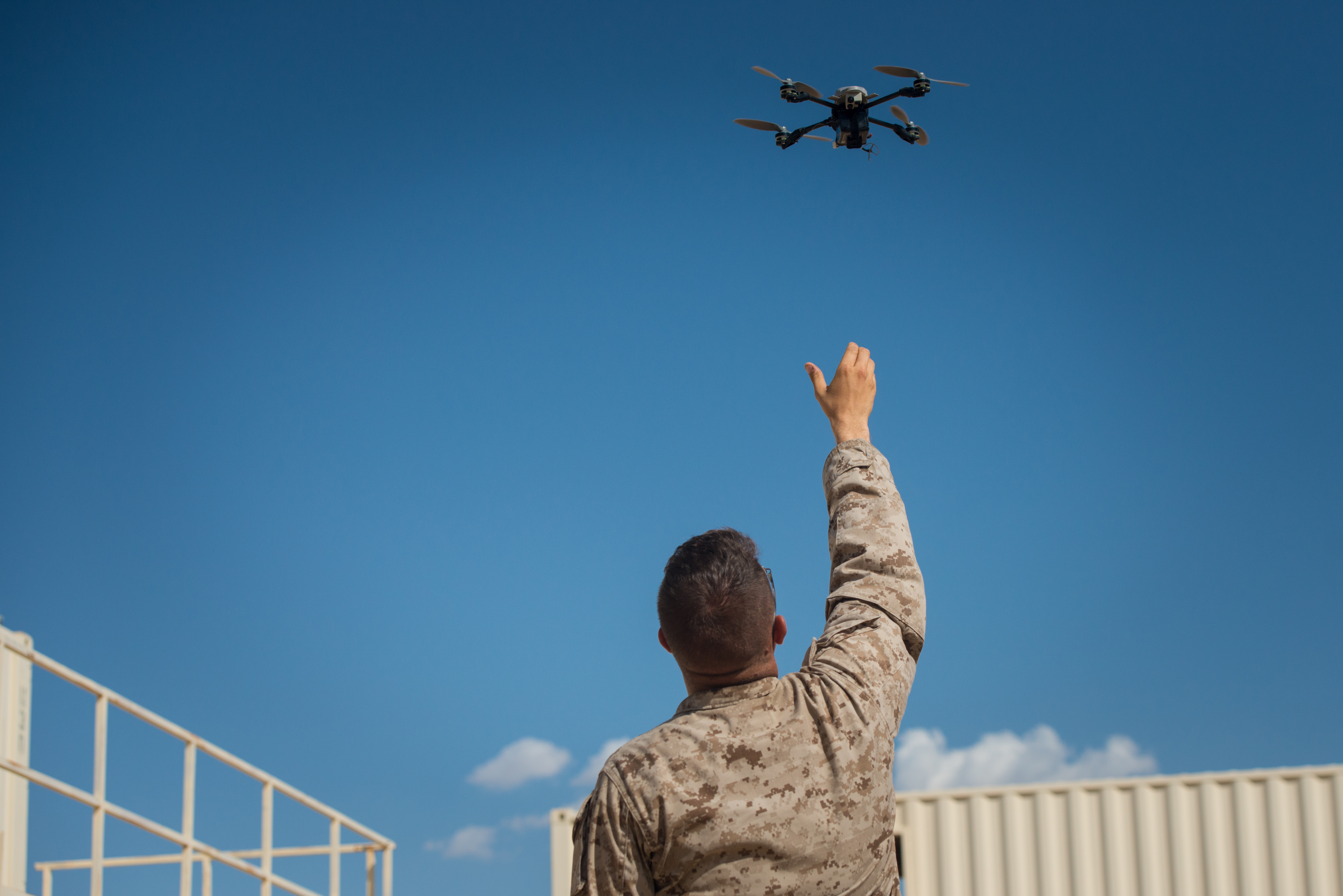
WASHINGTON, D.C. — The Marine Corps must train for the environment it expects to face going forward, which means a near-peer adversary with a capable air force, a savvy web presence, the ability to leverage unmanned systems, and cyber and electronic warfare capabilities, the commandant said today.
Gen. Robert Neller said the Marines haven’t faced a near-peer fight in recent memory, putting the onus on the training community to challenge Marines to work in a communication-denied environment, or under the watchful eye of enemy drones, or other emerging potential threats.
“We’ve developed a system of warfighting that is very dependent on the Internet, the network, and space,” Neller said at an event co-hosted by the Center for Strategic and International Studies and the U.S. Naval Institute.
“So looking at our potential adversaries, do we think that’s going to be there, that network is going to be there, if we were to engage with these folks? I would say, I don’t know, I don’t think you could assume that.”
Meanwhile, the service is buying up as much technology as it can – fielding the new F-35B Lighting II Joint Strike Fighter to collect and disseminate more information than any previous platform, setting up wireless connections so troops in the back of an MV-22 Osprey can get real-time updates, and experimenting with all manner of unmanned vehicles.
“We have to leverage the technology we have, it gives us an operational advantage, but at the same time it makes training even harder – you have to work through or be prepared for when it’s not there,” Neller said.
To that end, he said training at places like Marine Corps Air Ground Combat Center Twentynine Palms, Calif. is starting to reflect the high-tech nature of the Marines’ most likely adversary. Opposing forces in the training exercises have recently been given unmanned aerial vehicles to use against the Marine Corps units, Neller said, “so Marines are in a built up area and they’re walking down the street and then they look up in the sky and there’s this small quadcopter UAV, and they’re like, what’s that? They’ve never seen that before – although those who deployed in the Middle East are starting to see that more. … That’s the same quadcopter you can get on Groupon or go down to Sam’s Club and buy it for $400.”

Training also addresses potential challenges such as jammed radios, loss of GPS or the loss of the network. Neller mentioned the chaos that ensued when Delta’s global computer system went down this week, leaving the company without access to its reservations and flight management information. In that case, operations halted – but the Marine Corps would have to find a way to continue on its mission if it lost access to networks or information it is accustomed to leveraging.
Neller also highlighted the effect of this expected future fighting environment from a defensive perspective. With a more capable enemy, Marines will have to protect themselves from threats they aren’t used to facing and, as a component of that, do a better job concealing their location as they maneuver through a battlespace.
As an example, he said he recently spoke to a Marine Expeditionary Force (MEF) headquarters group commander that had gone out in the field for training. The headquarters group set up their camp and then quieted all the communications gear and covered its buildings with camouflage netting – which he said was commonplace when he joined the Marine Corps just after Vietnam but isn’t used much anymore because there was no air or space threat in Iraq and Afghanistan.
“Then they went up and they got into Google Earth and they took a picture of it,” Neller said.
“And it looked pretty good because it blended in with the terrain. Except they realized they had put concertina wire around certain very important facilities, and the light from the sun reflected off that concertina wire, and there was this big circle around this one thing. And anybody looking at it: what is that? There’s something in side that circle. Well, that was where the intel people were.”
Neller said the MEF headquarters group fixed the wiring and learned that lesson for themselves, but more generally “we’ve got to change the way we’re thinking, that an adversary can see us just as we can see them. So how do we keep from being seen and still see them? And how do we protect ourselves and put them at a disadvantage?”
The commandant said that even today in the Middle East, potential adversaries are using social media to recruit and to communicate, are using UAVs for a variety of missions, and are conducting asymmetrical warfare operations – all from non-state actors that until very recently were considered low-tech. Those new capabilities, if added to a nation-state with a viable air force and the backing of a government, could pose a serious threat.
“When was the last time an American military force worried about being bombed by enemy air? World War II?” he said.

The Marine Corps is considering this future operating environment and what capabilities it will need to be successful against a future near-peer competitor. Neller told USNI News in a sit-down interview at the Pentagon this week that he has settled on a general path forward for shaping the force – a group of colonels set out to chart an evolutionary path forward and a younger group of captains and majors were to lay out a revolutionary concept for the future force, and rather than pick one Neller ended up merging the two together. With that big picture decision made, Neller is working through the details of how to cram all the new capabilities the service will need into a 182,000-Marine force – which occupational specialties will have to grow, and which will either shrink or be moved into the reserves to make room – and should have a final decision made by early next year.





